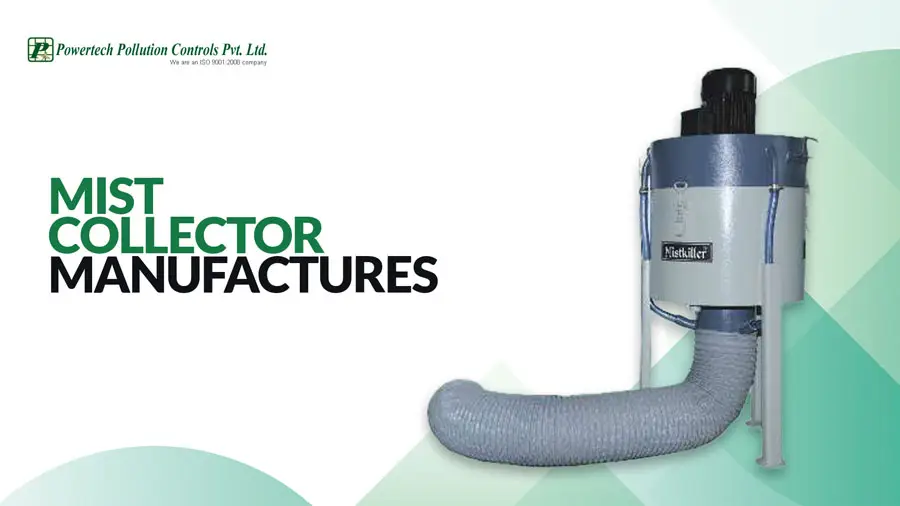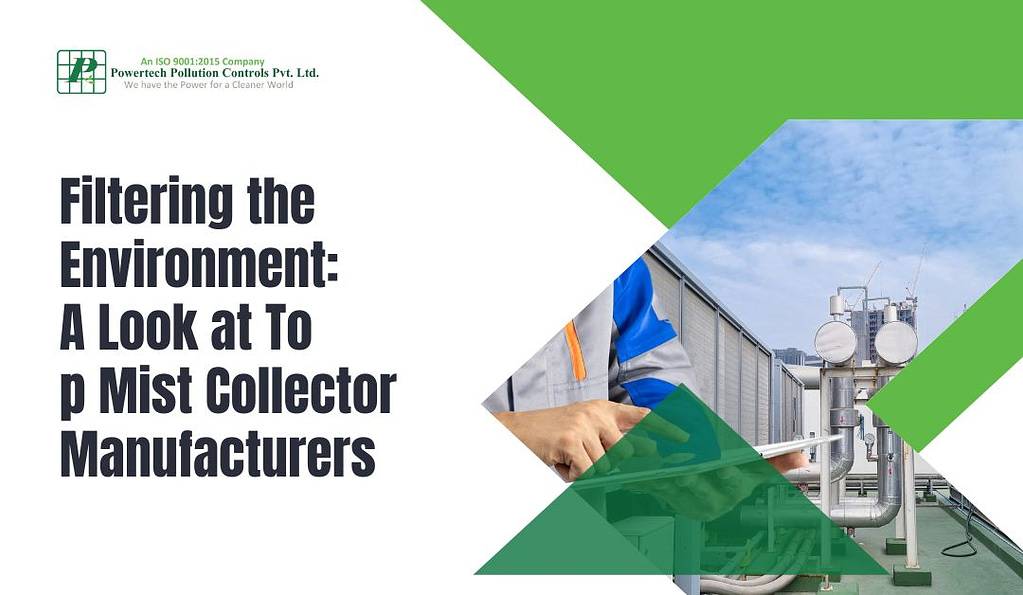Technology and Innovation of Mist Collector Manufacturer
Introduction:
Maintaining a safe and clean working environment is paramount in today’s industrial landscape. Air quality plays a critical role in the well-being of both employees and machinery. The mist collector is an innovative solution that has gained prominence recently. These devices efficiently capture and remove airborne contaminants, ensuring cleaner air and a healthier workplace.
In this comprehensive blog post, we will delve into the world of mist collectors, exploring how they work and the technology behind them. Whether you’re a business owner looking to enhance your workplace’s air quality or simply curious about this advanced equipment, you’ve come to the right place. Join us on a journey to uncover the science and innovation behind mist collector manufacturers.
The Science Behind Mist Collection: To understand how a mist collector works, it’s crucial to grasp the science behind it. Mist collectors are designed to remove airborne liquids and particles, such as oil mist and coolant mist, from the air. These contaminants are often produced in industrial processes like machining, metalworking, and welding.

Mist collectors employ impaction, filtration, and electrostatic precipitation techniques to capture and separate mist particles from the air. Let’s break down these processes:
- Impaction: In impaction-based mist collectors, incoming air is forced through baffles or vanes. As the air changes direction, mist particles collide with the surfaces and become trapped. This method is effective for larger mist droplets.
- Filtration: Filtration-based mist collectors use specialized filter media to capture mist particles. The air passes through these filters, trapping contaminants while allowing clean air. Filter media vary in type and efficiency, depending on the application.
- Electrostatic Precipitation: Some advanced mist collectors use electrostatic precipitation to charge mist particles and attract them to oppositely charged collector plates. This method is highly efficient in removing fine mist particles from the air.
Components of a Mist Collector: A mist collector is a complex system comprising several key components that work together to ensure effective mist removal. Understanding these components is essential to comprehend how mist collector’s function:
- Inlet: The inlet is where contaminated air enters the mist collector. It can be designed with various configurations to optimize airflow and mist collection.
- Pre-Filters: Pre-filters are often used to capture larger particles and protect the main filtration system from clogging prematurely. They extend the lifespan of the mist collector and improve its efficiency.
- Main Filter: As the name suggests, the main filter is the primary element responsible for capturing mist particles. Depending on the mist collector’s design, it can be made of various materials, including paper, fiberglass, or synthetic media.
- Fan: A fan or blower creates airflow within the mist collector. It draws contaminated air into the system, pushing clean, filtered air out.
- Collector Plates (in electrostatic precipitators): If the mist collector employs electrostatic precipitation, it will have collector plates that attract and collect charged mist particles.
- Exhaust: The exhaust is where clean air exits the mist collector and is returned to the workspace. The air should be free of mist and contaminants, ensuring a safer and healthier environment.
Types of Mist Collectors: Mist collectors come in various types, each suited for specific applications and environments. Mist collector manufacturers offer a range of options to cater to diverse industrial needs. Here are some common types:
- Centrifugal Mist Collectors: To separate mist particles from the air, employ centrifugal force. For applications requiring high volume, they are effective.
- Cartridge Mist Collectors: Cartridge-style collectors use pleated filter cartridges to trap mist particles. They are versatile and can handle a wide range of mist sizes.
- Electrostatic Mist Collectors: Electrostatic precipitators charge mist particles, making them adhere to collector plates. They are effective for fine mist particles.
- Media Filtration Mist Collectors: These collectors use filter media like fiberglass or synthetic materials to capture mist. They are suitable for applications with varying mist sizes.
- Wet Scrubbers: Wet scrubbers use a liquid, often water or oil, to capture and remove mist particles. They are efficient in applications with high humidity or sticky mists.
Advantages of Choosing a Reputable Mist Collector Manufacturer
When considering a mist collector for your industrial facility, partnering with a reputable manufacturer is essential.
- Custom Solutions: Established manufacturers can provide customized mist collectors tailored to your needs and industry.
- Reliability: Reputable manufacturers have a track record of producing reliable, high-quality mist collectors that perform consistently.
- Compliance: They ensure that their products meet industry standards and regulatory requirements, ensuring compliance and safety.
- Service and Support: Established manufacturers offer comprehensive customer support, including installation, maintenance, and troubleshooting services.
- Innovation: Leading manufacturers are at the forefront of mist collector technology, constantly innovating to improve efficiency and performance.
- Warranty: Reputable manufacturers typically offer warranties on their products, providing peace of mind to customers.
Applications of Mist Collectors: Mist collectors find applications in various industries where mist and airborne contaminants are generated. Some common sectors where mist collectors are employed include:
- Metalworking: Cutting fluids and coolants can generate oil and coolant mist in machining and metalworking processes. Mist collectors help maintain air quality and protect equipment.
- Welding: Welding operations produce fumes and particulate matter that can be hazardous to health. Mist collectors capture these pollutants, ensuring a safe working environment.
- Food Processing: In the food industry, mist collectors help remove cooking oil and food particles from the air, maintaining hygiene standards and worker safety.
- Chemical Manufacturing: Chemical processes may generate corrosive mist or toxic fumes. Mist collectors play a vital role in controlling air quality in chemical facilities.
- Pharmaceuticals: Pharmaceutical manufacturing requires strict adherence to cleanliness and safety. Mist collectors help maintain air quality in compliance with regulatory standards.
- Woodworking: Woodworking processes can produce fine wood dust and oil-based mist. Mist collectors ensure a healthier environment for woodworkers.
Maintenance and Care: Proper maintenance is crucial to ensure the continued effectiveness of a mist collector. Regular inspections, filter replacements, and cleaning are essential to keep the system running efficiently. Mist collector manufacturers often provide maintenance guidelines and schedules to help users maintain peak performance.
Conclusion: Mist collectors have emerged as indispensable industrial air quality management tools. They harness the power of science and technology to remove mist and airborne contaminants, creating a safer and healthier workplace. Understanding how mist collectors work, their components, types, and the advantages of partnering with reputable manufacturers empowers businesses to make informed decisions for cleaner, more productive environments.
As you consider implementing mist collection solutions in your facility, remember that the right choice can significantly impact air quality, worker well-being, and operational efficiency. By prioritizing clean air solutions.





